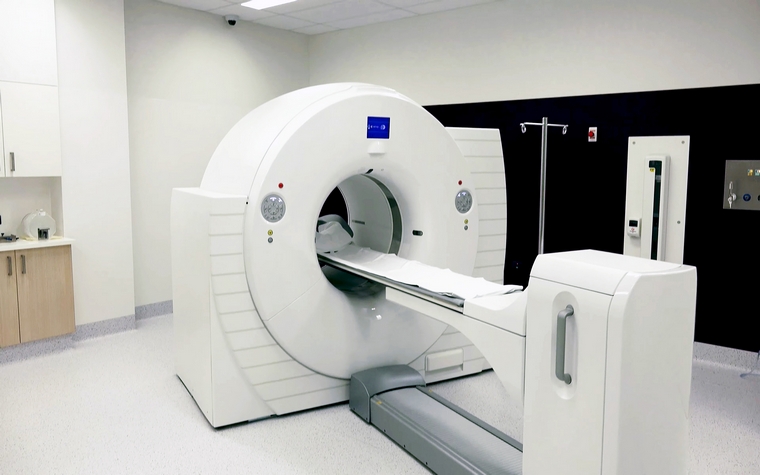
What is PET-MRI, What is it Used for and What are its Benefits?
PET-MR is an imaging method that combines Positron Emission Tomography (PET) and Magnetic Resonance Imaging (MR) technologies. This hybrid technology combines the advantages of both methods to provide more detailed and comprehensive images. PET-MR is used in the diagnosis and treatment follow-up of cancer, neurological and cardiovascular diseases.
What is PET-MRI?
PET MRI devices are hybrid imaging systems that use the highest technology. In these systems, PET and MRI imaging are combined in a single machine. One of the important imaging methods of radiology, the MRI imaging device works like a giant magnet that produces a magnetic field. MRI has significant advantages over CT technology, such as not containing ionizing radiation, having a high ability to image soft tissue, and being able to take images in multiple planes. Combining these superior features with the metabolic information (information about the active functioning of the body) from PET has made PET MRI imaging a priority in diagnosis, patient follow-up, and treatment evaluation, especially in oncology patients. PET MRI combines the metabolic information obtained from PET with the anatomical and functional information from MRI at the same time, providing a common image. This image allows the specialist physician to obtain important information for the benefit of the patient. PET MRI devices are frequently used, especially for oncology patients. PET MRI imaging serves three main purposes in oncology patients:
What is PET-MRI Used For?
- It is used for the detection of possible cancer focus and cancer diagnosis: In this step, almost the entire body is scanned from head to toe. During this scan, anatomical (related to the structure of the imaged organ) information about soft tissue is obtained with MRI. This information is combined with metabolic information obtained through PET imaging performed simultaneously. As a result, the PET-MRI image is obtained. Since both information are obtained simultaneously and evaluated on a single image, the focus of this cancer can be detected with high accuracy if there is cancer. In this way, cancer screening can be performed throughout the body as part of the check-up, thus making early diagnosis of a possible cancer possible.
- It is used in the staging of detected cancer: Since the entire body can be scanned in a single session, distant metastasis staging can be done simultaneously with cancer diagnosis.
- It is used to evaluate the response to treatment in patients undergoing oncological treatment: The part of the cancer being treated is examined by considering both the anatomical information provided by the high imaging power MRI and the metabolic information provided by PET. In this way, the dimensional change as a result of treatment as well as the metabolic response to treatment can be evaluated. Since all of these can be done in a single session, patients are prevented from having to undergo different imaging methods repeatedly. In this way, the loss of time, which is an important factor in oncological treatments, is also prevented.
Which Diseases Is PET-MRI Useful in Diagnosing?
PET-MRI plays an important role in the diagnosis of various diseases. Below is a list of the main diseases and conditions that PET-MRI is useful in diagnosing:
- Brain Tumors: PET-MRI is highly effective in determining the location, size, and extent of spread of brain tumors. It allows for a more accurate assessment of tumors by showing both anatomical details and metabolic activity.
- Lymphoma: PET-MRI is used in the diagnosis and staging of lymphoma. It provides detailed images of lymph nodes and other tissues, which makes it possible to better understand the spread of the disease.
- Prostate Cancer: PET-MRI is an important tool in the diagnosis and determination of the spread of prostate cancer. The detailed anatomical imaging capacity of MRI, combined with the ability of PET to show metabolic activity, allows for more precise detection of cancerous tissue.
- Alzheimer's Disease: PET-MRI is used in the early diagnosis of Alzheimer's disease. It helps monitor the progression of the disease by showing biochemical changes and anatomical structures in the brain.
- Parkinson's Disease: PET-MRI is used in the diagnosis and staging of Parkinson's disease. It supports the diagnosis of the disease by evaluating dopamine activity and structural changes in the brain.
- Cardiovascular Diseases: PET-MRI is effective in assessing the vitality and blood flow of the heart muscle. It is used to identify damaged tissues and blockages in the arteries after a heart attack.
- Infections and Inflammatory Diseases: PET-MRI can be used to detect foci of infection and inflammatory processes in the body. This is especially useful in complex cases and chronic inflammatory diseases.
Apart from these diseases, PET-MRI can also be used to evaluate many other medical conditions and optimize treatment plans. This technology provides doctors with more comprehensive and accurate information about the patient's condition, making it an important tool in early diagnosis and treatment of diseases.
Is PET-MRI Safe?
Yes, PET-MRI is generally a safe procedure. The MRI portion does not involve radiation because it uses radio waves and magnetic fields to image. The PET portion uses a low dose of radioactive material, but this dose is generally considered safe for patients. However, careful consideration should be given to pregnant women and patients with certain conditions.
Is PET-MRI Different From PET-CT?
Yes, PET-MRI and PET-CT are different technologies. PET-CT is a combination of PET and Computed Tomography (CT). CT uses X-rays to image and show anatomical details. PET-MR uses MRI to provide more detailed soft tissue images and reduce radiation exposure. Therefore, PET-MR may be preferred in some cases.
How Long Does a PET-MRI Scan Take?
A PET-MRI scan usually takes 1 to 2 hours. The duration may vary depending on the scope of the examination and the patient's condition.
Is PET-MRI a Painful Procedure?
No, the PET-MRI procedure is painless. However, some patients may experience mild discomfort because you must remain still during the procedure. Additionally, a needle prick may be felt when a radioactive substance is injected into a vein for the PET scan.
When Are PET-MRI Results Available?
PET-MRI results are usually ready within a few days. The radiologist analyzes the images and reports the results. The results are forwarded to the patient's doctor, who informs the patient.
In Which Situations Is PET-MRI Preferred Over PET-CT?
PET-MRI is preferred over PET-CT, especially when soft tissue details are important. It provides superior anatomical detail in imaging organs such as the brain, prostate, and liver. Additionally, PET-MRI may be preferred more frequently in children and young patients to reduce radiation exposure.
Is Any Preparation Required Before PET-MRI?
Yes, some preparations may be required before PET-MRI. For example, you may be asked to fast for a few hours before the procedure. It is also important to inform your doctor if you are taking certain medications. Detailed preparation instructions will be provided to you prior to your appointment.
Are You Exposed to Radiation During PET-MRI?
Yes, during PET-MRI, you are exposed to a low level of radiation because radioactive material is used. However, this dose is generally considered safe and the MRI portion does not involve radiation. However, precautions are taken to keep radiation exposure to a minimum.


